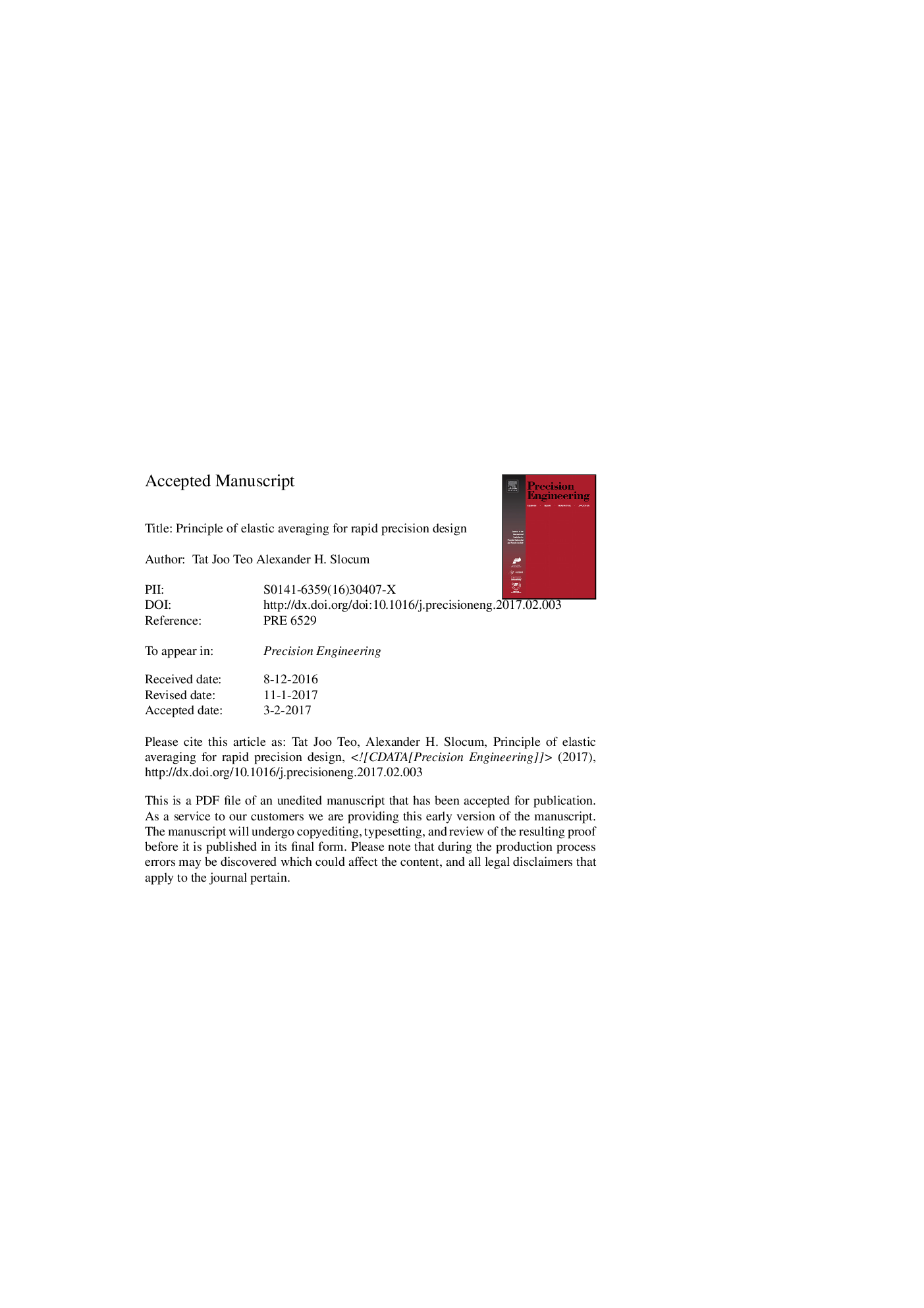| Article ID | Journal | Published Year | Pages | File Type |
|---|---|---|---|---|
| 5019093 | Precision Engineering | 2017 | 18 Pages |
Abstract
Elastic averaging has worked well throughout history to help create precision machines. With the advent of rapid fabrication processes such as additive manufacturing, abrasive waterjet machining, and laser cutting etc., parts fabricated from these processes can be designed with special elastic features that “average out” the uncertainty in dimension tolerances and manufacturing errors as a collective system at very low cost. This paper presents the principle of elastic averaging and explores simple flexure design to create elastic averaging features within parts for precision alignment and assembly applications. A first-order analytical model and a quick estimation approach is introduced to predict the alignment errors and the repeatability of these parts. Experimental results show that a part with four elastic averaging features was capable of achieving precision assembly with another mating part even after huge errors were purposefully introduced to the mating features. Results also show that the part can achieve sub-micron level repeatability after more than 20 trials of removals and assemblies. Lastly, analytical simulations show that repeatability of the part can be further improved by increasing the number of elastic contacts. All these results suggest that the assemblies of rapid fabricated parts with elastic averaging features can be as precise as those made from conventional machine centers.
Keywords
Related Topics
Physical Sciences and Engineering
Engineering
Industrial and Manufacturing Engineering
Authors
Tat Joo Teo, Alexander H. Slocum,
